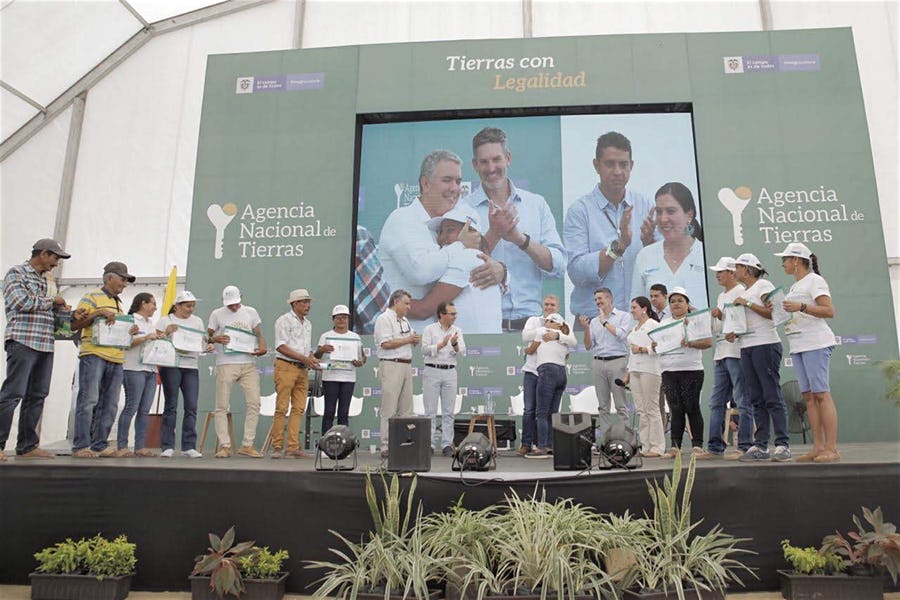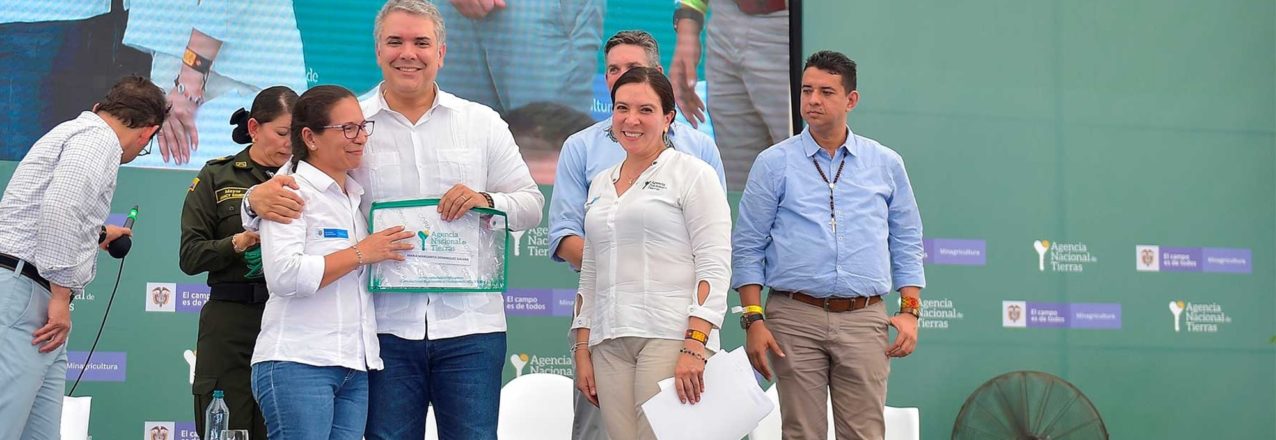By Land and Rural Development Program in Colombia
The Ovejas pilot is facilitating property rights for around 2,900 campesinos, more than half of whom are rural women, while simultaneously updating the cadaster information for 5,600 land parcels.
Colombian President Iván Duque attended a historic event to witness the delivery of 1,058 land titles to rural landowners from the municipality of Ovejas (Sucre), the majority of whom are women.
Myriam Martínez, Director of Colombia’s National Land Agency, was on hand to celebrate the achievement in massive land formalization while reiterating the importance of women and their leadership in land titling and administration.
The titles, which are the result of a massive land formalization pilot designed by USAID, clearly show the “utter importance” of rural women, according to Martínez. More than half of the land titles delivered went to women-led households.
 “Today we have 474 women-led households and an additional 154 women as part of joint land titles with their husbands. We are asserting the rights of women and recognizing that through their labor as heads of families as well as laborers and growers, they too, can be landowners.”
“Today we have 474 women-led households and an additional 154 women as part of joint land titles with their husbands. We are asserting the rights of women and recognizing that through their labor as heads of families as well as laborers and growers, they too, can be landowners.”
-Myriam Martínez, Director of the National Land Agency.
The Rural Woman
According to statistics from the National Land Agency, the rural women of Ovejas have played an important role in the titling process, taking into account that of the 763 adjudicated government-owned parcels (known as baldíos), 627 (82%) were titled in the name of women-led households or joint titles.
In addition, of the 295 formalized private parcels, 140 (47%) were titled in the name of women-led households. In total, the government ajudicated 1,395 hectares of Ovejas municipality, and this was the first time the government has delivered this many titles in one municipality.
The Ovejas pilot was designed by USAID with input from the National Land Agency and Colombia’s other land-related entities, and for the last 18 months has collected property data across the entire municipality, resolved land conflicts, and pioneered a path through the confusion and intricacies of land formalization in Colombia. The pilot is proving that a massive approach that combines titling and cadaster, reduces redundancy. And when government entities work together, it also reduces costs by 60% and the time it takes to formalize a property and update the rural cadaster.


